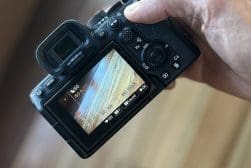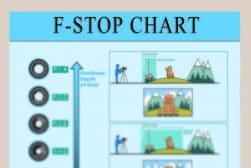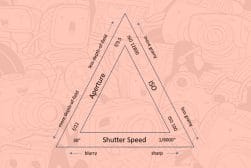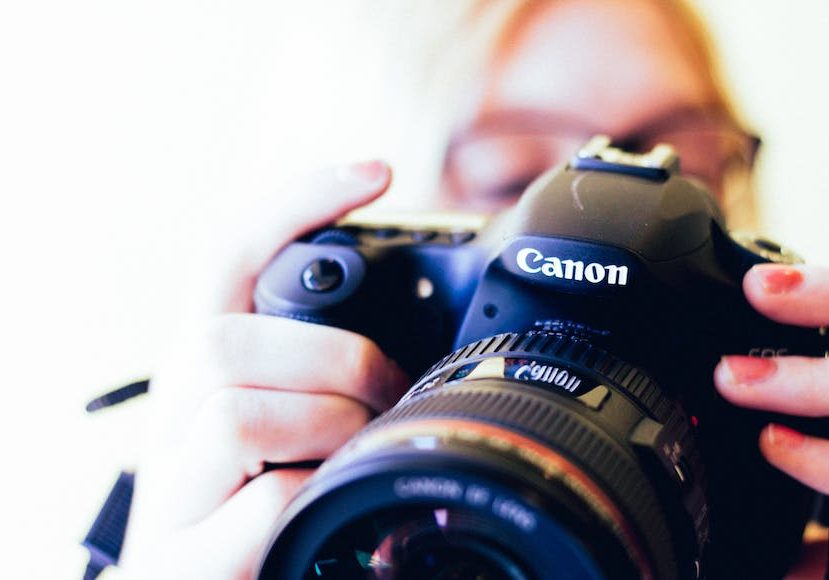
What Is a Stop in Photography? Beginner’s Guide
Unlock the secrets of photography exposure with an easy-to-read guide to what a stop is and how it affects the brightness of your photos.
Learn | Lighting Guides | By India Mantle
This guide explains stops in photography. You will learn how to adjust your camera exposure manually, and how to get the best image in different lighting conditions.
Many hobbyists find the concept of stops overwhelming, but that changes once they understand what each exposure setting means, and how it affects their photograph.
In simple terms, a stop in photography is a reference system. Each stop marks the point when the light reaching the camera sensor is doubled or halved. There are more details and examples in the coming sections, so keep reading.
What Do Photographers Mean by Stops?
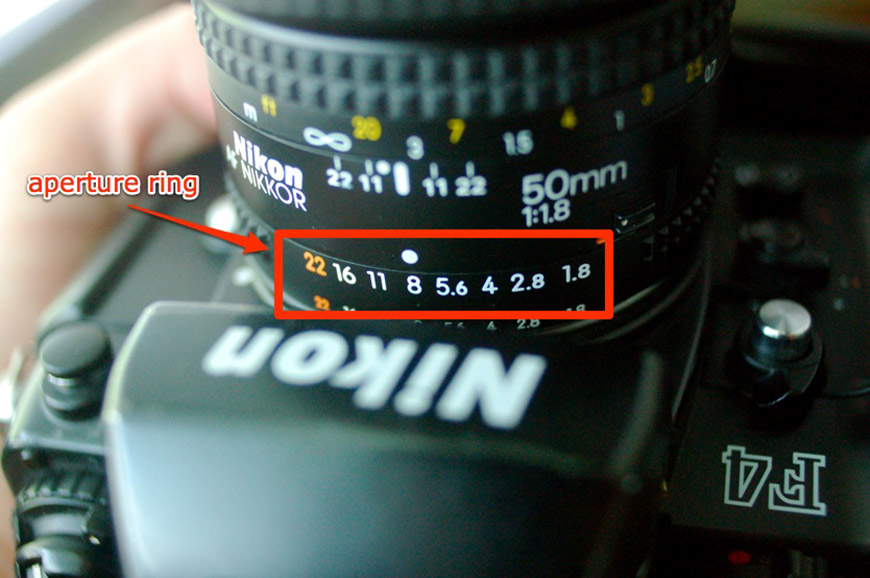
Aperture stops. Credit: Derek K Miller, CC BY NC 2.0 DEED, Flickr.
Back in the day, photography was a difficult craft. What made it even more difficult was the absence of a way to gauge how much light was reaching the sensor.
To solve this problem, camera manufacturers added dents around the lens, which corresponded to calibrated stops. Every time a stop was reached, the exposure was doubled. And every time the lens rotated in the opposite direction, the exposure was halved.
Stops stayed with photographers from that point on. They mainly control the aperture and shutter speed.
What Are the Three Main Camera Settings?
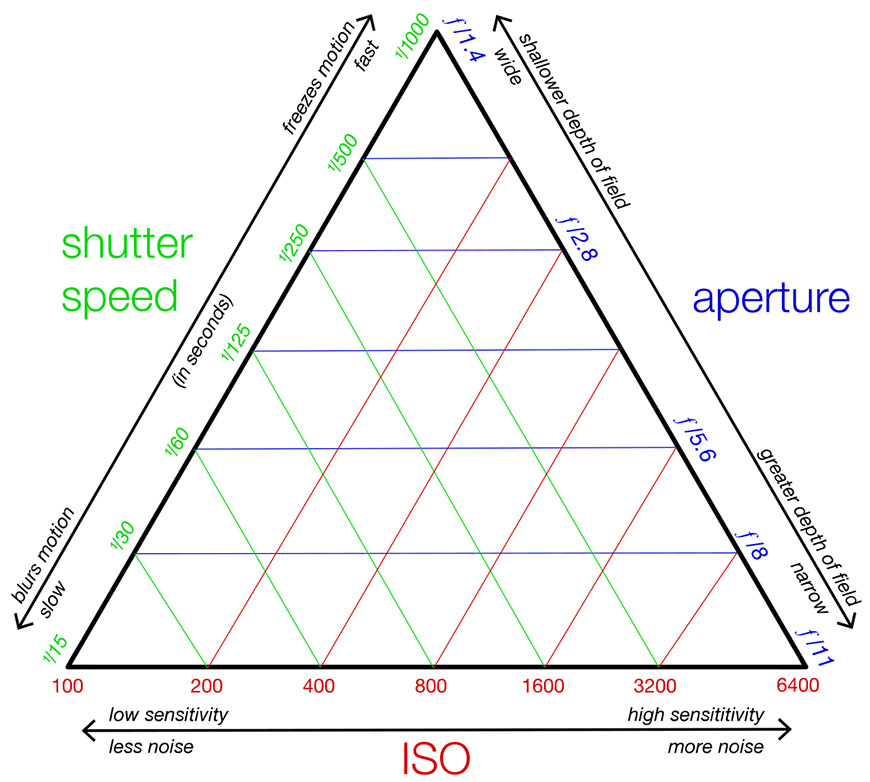
Exposure triangle. Credit: WClarke and Samsara, CC-BY-SA-4.0, via Wikimedia.
Three parameters in photography decide whether an image would be too dark, too bright, or just right. Before going into more details about stops, let’s talk a little about the three key camera settings.
Aperture
The lens opening, or aperture diameter, can be set to wide or narrow, controlling how much light passes through to the camera sensor.
A wide aperture size is known as a low f-stop, while a narrow one is a high f-stop. An increase in aperture, or F-stop value, from f/1.2 to f/1.4 decreases the light going inside the lens.
A change of aperture setting from f/1.8 to f/2.8 halves the amount of light entering the lens. Thus, we call that change a stop.
Shutter Speed
Shutter speed is how long you’re leaving the lens open to incoming light. A longer time lets in more light, and that’s advisable in darker settings.
A shorter shutter speed lets in less light, which is what you would go for on exceptionally sunny days.
If you change the shutter speed from 1/125 second to 1/250 second, that is considered a one-stop decrease in exposure. It halves the amount of light reaching the sensor.
ISO
ISO measures the film or camera sensor’s sensitivity to light. In that sense, it’s also an indicator of exposure. A higher ISO number means that the camera is more sensitive to light.
Increased sensor sensitivity is a huge advantage in low-light conditions. It comes at a price, though, since it adds “noise” to the image.
Changing the ISO number from 100 to 200 doubles the exposure. Hence, it’s considered a stop.
- Read more: Understanding the Exposure Triangle
What Are the Benefits of Understanding Stops in Photography?

Shutter speed in Greenwich (segment). Credit: Aram Dulyan, CC Attribution 2.0 Generic, via Wikimedia.
Understanding stops in photography gives you manual mode proficiency, in addition to many other perks. These include the following.
Avoiding exposure mistakes: Overexposure makes the images too bright and bland, and underexposure makes them too dark and blurry.
To get aesthetically appealing photographs, you can practice correct exposure using the camera’s built-in histogram, metering modes, and exposure bracketing.
Creating a shallow depth of field: A shallow depth of field typically blurs the background and isolates the subject in the forefront.
How Much Do You REALLY Know About Photography?! 🤔
Test your photography knowledge with this quick quiz!
See how much you really know about photography...

This is a popular technique in portrait photography, as well as creative nature photography. You can use a wide aperture with a low f-stop, such as f/1.8 or f/2.8, to get that effect.
Capturing motion blur: This effect gives dynamism and a sense of movement to your photograph. Examples include action shots, trailing lights, or smoothly flowing water. Use a low shutter speed to blur moving objects.
Getting a motion freeze effect: This is the opposite of motion blur. Motion freeze is extensively used in sports and wildlife photography to get crisp images of fast-moving subjects.
To capture a sharp image of a dog jumping up and down, set your shutter speed to 1/250. For a biker or a bird, aim for 1/500th of a second or even 1/1000.
To further improve your photo, you can use the predict and pre-focus feature. And if the light is not too bright, you can use a burst of flash. Just be careful with harsh shadows or red eyes.
Shooting in low-light conditions: Using higher ISO settings makes the camera sensor more sensitive to light. You can also open up the aperture or set the shutter speed to a lower point.
It’s best to place your camera on a tripod if you’re taking a night shot. This would reduce the noise ensuing from camera movement, which gives sharper images.
- Read more: Understanding Underexposure & Overexposure
What Does 2 Stops Mean in Photography?
Moving 2 stops forward quadruples exposure, while a decrease of 2 stops divides the exposure value by 4. You can achieve a four-fold increase in exposure by taking one of the following actions:
- Open the aperture by 2 stops, for example from f1/2 to f/1/4
- Slow down the shutter speed to let in more light. 2 stops from 1/125 to 1/30 should do it
- Change the sensor sensitivity, say from ISO 100 to ISO 400
Making these changes can help you in reducing noise.
If you want a sharp image, it’s best to reduce the sensitivity by 2 stops. You can get a clean, low-noise photograph with an ISO 100 if the lighting conditions are favorable.
You can also take an epic night shot if you increase the exposure by 2 stops to get more light, and hence more visual data. Open the aperture more, decrease the shutter speed, or quadruple the ISO.
Finally, freezing motion is achieved by using specific shutter speed settings. In sports photography, speed is critical. You can get a sharp image by increasing the shutter speed by 2 stops.
This should give you a crisp figure in every frame.
How Many Stops Does a Camera Have?
Most cameras have 8-14 stops, depending on two factors: the sensor dynamic range and the camera settings.
It’s worth noting that the number of stops isn’t indicative of the camera’s versatility or image quality. You should pay more attention to the range of exposure the camera can capture.
To illustrate:
A smartphone camera often comes with 8 stops. The digital zoom has 2 stops, plus 6 stops for the sensor dynamic range.
In contrast, a high-end DSLR camera typically has 14 stops, with 2 stops for the lens aperture range, and 12 stops for the sensor dynamic range. A compact camera usually has 10 stops.
How to Calculate Stops in Photography?
Stops follow a logarithmic scale, so the exposure value does not follow a linear intuitive model you can calculate by simple division or multiplication.
Additionally, you have to set the three key camera settings in unison to get the desired visual effect.
Photographers often use one or more of the following methods to get the best camera settings for every lighting.
- Exposure triangle apps: These apps help photographers see how changing each setting affects the image.
- Exposure calculators: Online exposure calculators allow photographers to input their desired exposure, and read out all the possible settings to achieve that result.
- Stop charts: These are rather classical diagrams that demonstrate the effect each parameter has on the other two. Not too many photographers use these charts nowadays with the available automated tools, but they provide extra insights on the matter.

Check out these 8 essential tools to help you succeed as a professional photographer.
Includes limited-time discounts.
As the Content Manager of Shotkit, India Mantle brings with her a lifelong love for photography that she developed during her childhood, watching her father document their family moments with his Nikon EM. In her free time, you find her enjoying the awe-inspiring natural beauty of her home, Northern Rivers, Australia.





